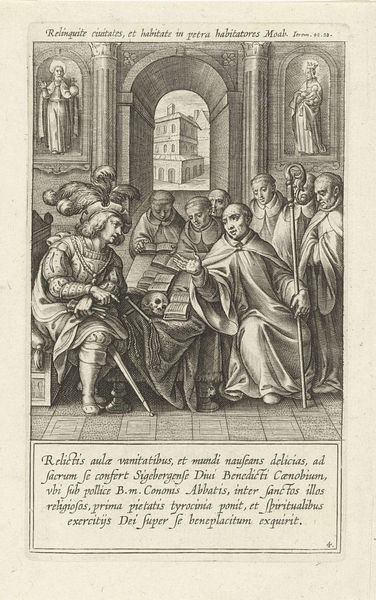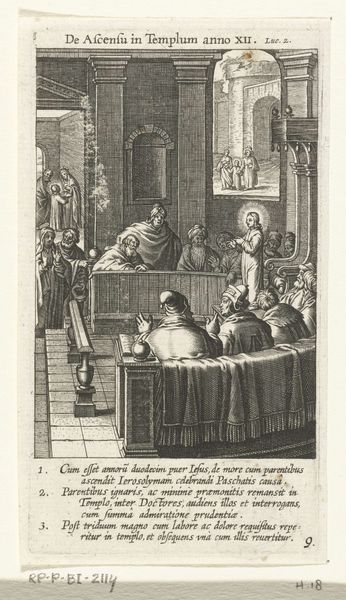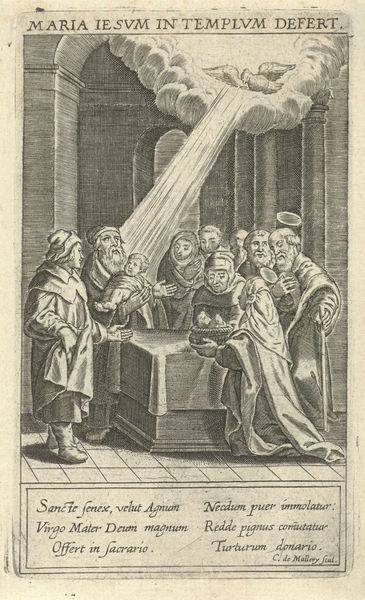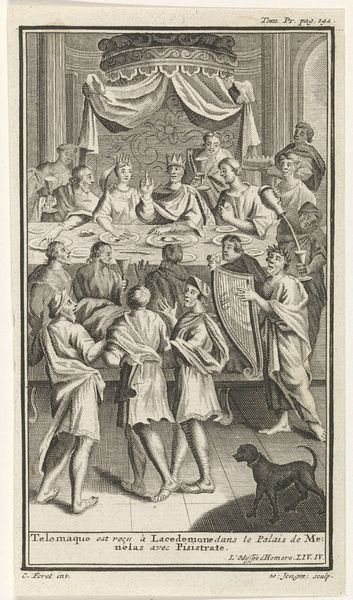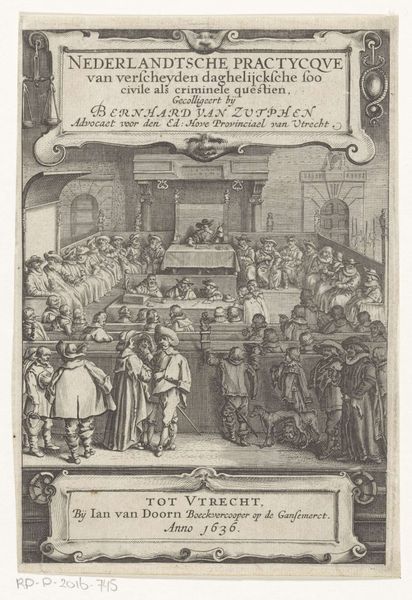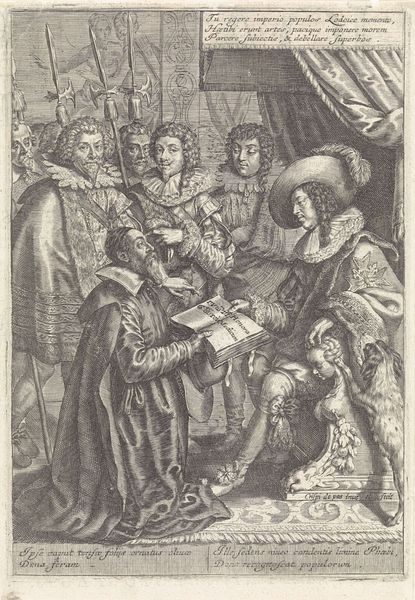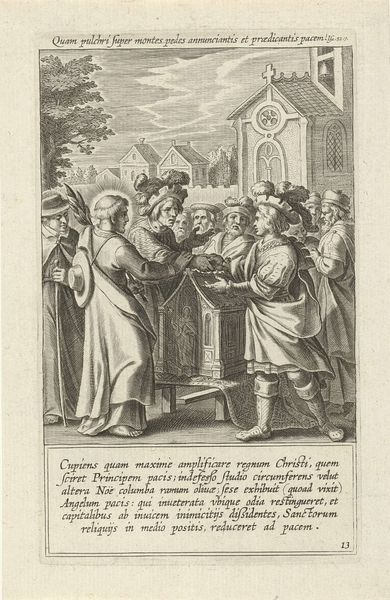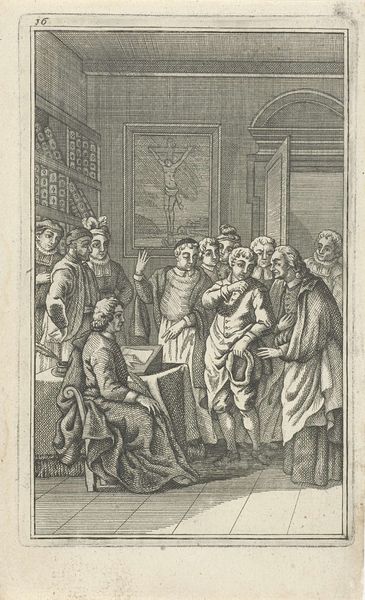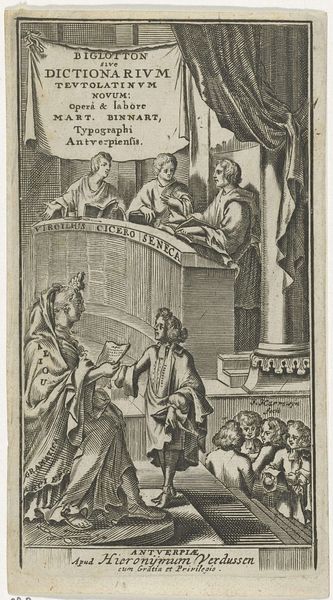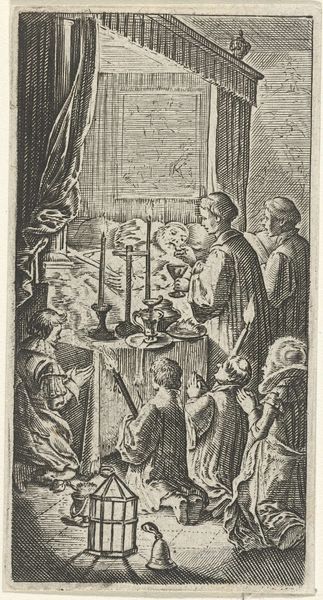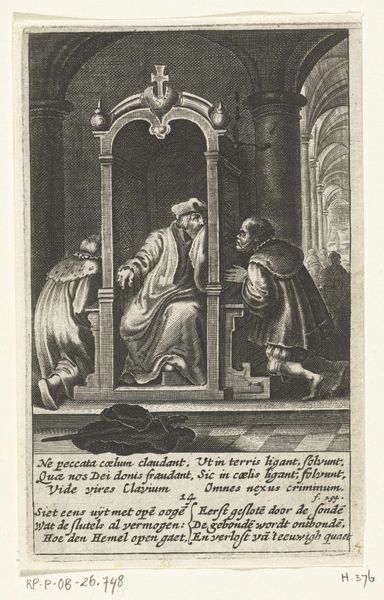
Raadsvergadering waarin het wonder bezegeld wordt 1590 - 1639
0:00
0:00
boetiusadamszbolswert
Rijksmuseum
print, engraving
#
portrait
#
medieval
#
narrative-art
#
baroque
# print
#
perspective
#
figuration
#
line
#
genre-painting
#
history-painting
#
engraving
Dimensions: height 131 mm, width 83 mm
Copyright: Rijks Museum: Open Domain
Curator: Ah, here we have "Raadsvergadering waarin het wonder bezegeld wordt," an engraving dating from 1590 to 1639 by Boëtius Adamsz. Bolswert, housed right here at the Rijksmuseum. The very lines it's made of—it seems austere, doesn’t it? So…structured. Editor: Austere? Yes, I get that. Like a tax audit given form. The crisp detail...it almost hurts my eyes, the artist has committed, and the level of production detail and refinement in this type of artwork has always intrigued me. Look at all the etching. All those men in black, sitting there so somberly. Curator: They are ratifying something monumental. Something with consequence, with great meaning that isn’t necessarily present here in a way we are necessarily moved to think of. Editor: I mean, even the little dog under the table looks bored! There's such a clear emphasis on depicting the room itself and making that visible through use and technique. Think about how it shows a very physical space of production here as it goes off in the background. I bet that room saw countless meetings... endless deliberations. Curator: Absolutely. And what about the men themselves, huddled around the table, papers spread out before them? Each face so meticulously rendered, so distinct... It speaks to this desire to capture individuality, while simultaneously presenting them as a collective. I love that tension. And each line of ink tells a story of craft, of apprenticeship, of labouring towards perfection, and the dog's got it good on the ground Editor: And it really underlines the material and social world. It's less about some heroic moment and more about how things got done. I am thinking what it all really says about how it’s produced. About craft and commerce, you know? Curator: You know I see your point about labor. And maybe I do over romanticize it, but in those black lines, that hatching, I see a spirit being rendered—a spirit caught between the mundane and the monumental. Editor: Well, mundane certainly had its purpose. What can I say!
Comments
No comments
Be the first to comment and join the conversation on the ultimate creative platform.
